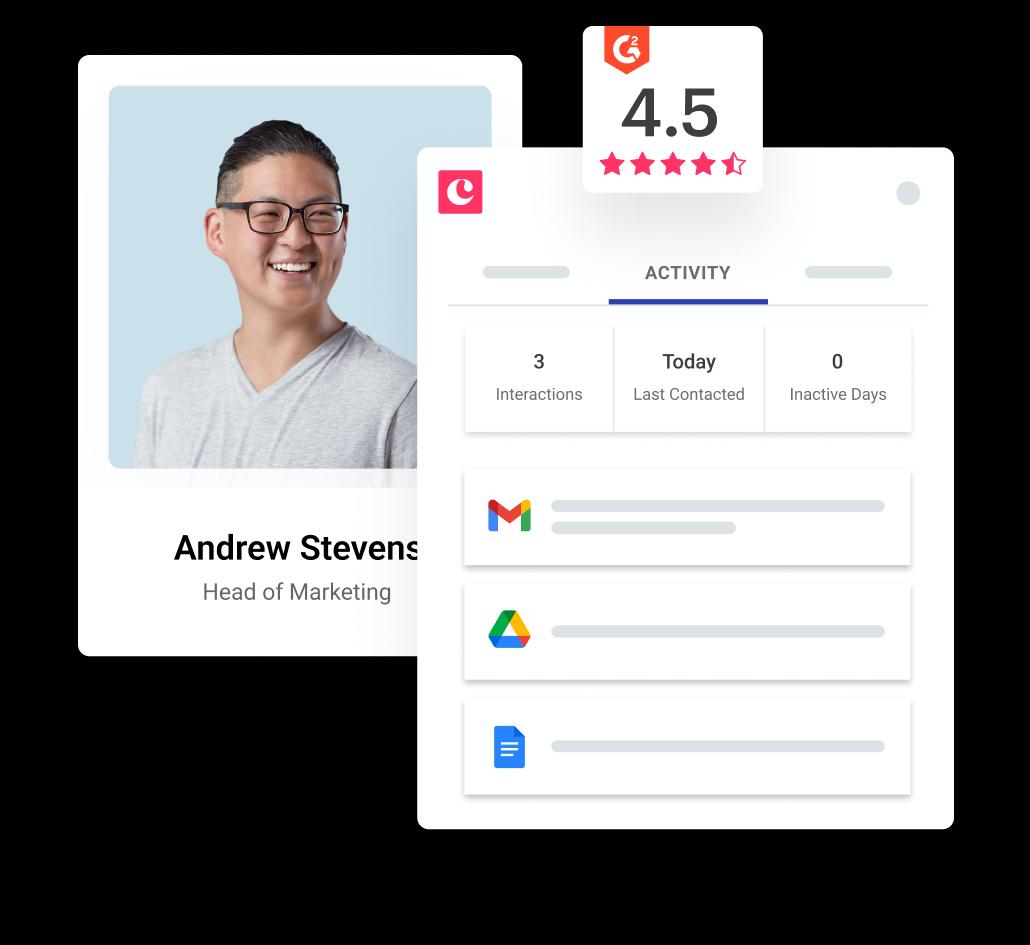
Marina Fishman
Director of Sales
For anyone on a sales team, there’s one shining beacon of progress that all eyes are constantly following: revenue.
While revenue is the ultimate KPI—and often the ultimate goal of a business—it’s a “rear view” metric that only represents outcomes.
Today’s truly effective sales executive is asking: What’s happening in our company on a daily basis? What’s helping to accomplish our goals and what isn’t? How can we expand the good and improve the bad?
In order to answer these questions, you need to track the right metrics.
Of course, the KPIs you track will depend on your organization’s unique goals and sales performance. But it helps to have a starting point.
Let’s look at some sales executive KPIs across the sales cycle including, how we use them here at Copper, and how you can leverage them for your team:
1. Time-to-win
Time-to-win (also called sales cycle length) is a measurement of how long it takes to complete the entire sales cycle, from the lead’s first touchpoint to when they pay you.
This metric can vary dramatically based on the nature, scope, and the price of your company’s offering. However, your team can benefit from using industry benchmarks as you track and optimize your own numbers over time.
Research from CSO Insights shows that of the 886 sales leaders surveyed, the most common time-to-win for existing customers was between one and three months (38.4%), and the most common time-to-win for new customers was four to six months (28.2).
If certain reps lag behind others, or if your time-to-win decreases over time, you may benefit from increasing your team’s responsiveness and working to build stronger customer relationships along the sales cycle.
Which brings me to my next point.
2. Rep responsiveness
During the sales process, it’s critical for your reps to have steady communication and keep their leads warm and engaged.
This is a two-part KPI. In your sales pipeline review, you can examine each rep’s responsiveness through:
- Last contact: Look at each open lead. When was the last time your rep communicated with them?
- Inactive dates: Is there a noticeable trend in how much time passes between communications?
Generally, there’s a timeframe where warm leads become cold ones. This varies between organizations, but it’s critical for you and your team to keep track of it so they can stay responsive and avoid the tragedy of good leads going stale.
Your average time-to-win is a good indicator for this timeframe, and you can use it to create response benchmarks for your sales team.
If your rep can't meet these benchmarks, it could be a sign that they need help checking up on demos and trials, or you need to provide better support to ensure that leads aren’t left to fend for themselves.

More tips
🚀 your number.
Learn how sales reps can be more effective in this webinar with PersistIQ's CEO.
3. Close rate
Close rate (also called conversion rate) is your ratio of leads to closed customers.
You can calculate it by dividing your number of converted customers by your number of sales prospects, then multiplying that number by 100 to get a percentage.
Your close rate can be incredibly helpful for reverse engineering your sales process to see where things tend to fall through.
For example, say we want to see the close rate of our sales calls during the month, in relation to key stages in the pipeline. We look at the number of:
- Calls made during the month
- Sales opportunities created from those calls
- Those opportunities that made it through the cycle to a proposal
- Proposals that closed
In addition to seeing the full close rate from start to finish, we can also examine which stages of the cycle have the most drops, and how to optimize them.
4. Activity by user
Copper’s Activity by User report shows us what each team member is doing on the day-to-day.
This provides some critical insights into our team members with the strongest and weakest performance, as well as how we can support them.
For example, if a few of your team members have a high ratio of pre-sale interactions with clients, but few closes and post-sale interactions, you might choose to offer extra support and training around closing deals.
Alternatively, you can pair strong performers with weaker performers to encourage mentorship, collaboration, and strength in numbers via team selling.
And while it shows the activity of your company’s individual sales team members, this report’s value extends beyond the individual. It’s also a source of valuable insights into your company as a whole.
For example, it can help you identify trends across your team, along with shared victories and roadblocks that can be addressed at an organizational level.
5. Sales pipeline by source
A strong approach to boosting your company’s sales efficiency is to figure out which lead sources bring your company the most leads, conversions, and revenue.
Copper’s Pipeline by Source report shows you the sources for all leads in your sales pipeline, as well as what stage of the pipeline they’re in and their monetary value.
These fields are customizable, allowing you to track your ROI from marketing and sales efforts like advertising, cold calls, emails, and other lead generating activities your company uses.
You can use these results for proactive decision-making as you plan monthly, quarterly, and annual sales strategies.
Say for example that you have a high close rate and revenue value for the leads that come from your banner ads—significantly higher than your cold calls. You can choose to allocate more of your marketing budget to banner ads.
You might also reduce the amount of time your team spends on cold calls, or re-evaluate the cold calling strategy or sales script.
6. Loss reasons
Copper’s Loss Reasons report allows your sales reps to mark why each sales opportunity was lost.
You can customize these fields for your organization, with the three default reasons listed as:
- Competitor: Did the lead end up buying with one of your competitors?
- Features: Does your offering lack one or more features that were critical for the lead?
- Price: Did the lead deem your offering too expensive?
Keeping track of this information over time can be a massive help when it comes to long-term planning for your offering and your company.
For example, if more than 50% of your qualified leads say that your offering lacked a specific feature, your company might want to consider optimizing your product to include it.
Likewise, if a high number of leads aren’t buying because of your price point, you might consider changing your pricing structure or training your team to overcome price objections.
7. Customer lifetime value vs. customer acquisition rate
When it comes to your company’s bottom line, customer retention can be just as impactful as closing those deals in the first place.
What’s more, you should be aware of the cost you’re paying to retain those customers.
You can do this by looking at two metrics:
- Customer lifetime value (CLV): The monetary value of each customer during their entire “lifespan” as a customer. Calculate it by multiplying the average purchase value per year by the average customer lifespan in years.
- Customer acquisition cost (CAC): How much on average do you spend to acquire a customer. Calculate it by dividing your total sales spend by total customers acquired during a specified time period.
Ideally, your CLV will be considerably higher than your CAC, which means you’re making strong profits. If your CAC is equal or higher, your company might be breaking even or losing money.
This could mean several things, including (but certainly not limited to):
- Spending too much money on acquiring new customers
- Not fully leveraging upsell opportunities to increase CLV
- Failing to retain customers long enough to become profitable
- Focusing too heavily on closing customers that aren’t the right fit
With these numbers and some further investigation, you’re on the path to raising your profit margins and customer satisfaction.
If you aren’t using these KPIs already, the best time to start doing it is now.
KPIs are a great way to measure and grow, but they’re only useful if you’re paying attention to them.
For ambitious sales executives, prioritizing the right KPIs is the difference between driving sustainable growth and seeing your revenue fall flat.
With these key performance indicators, sales figures don’t have to be a mystery—or a slog.
By using the reports and strategies mentioned above and holding your reps accountable to manageable, performance-focused KPIs, you’ll be able to drive faster revenue and business growth.










